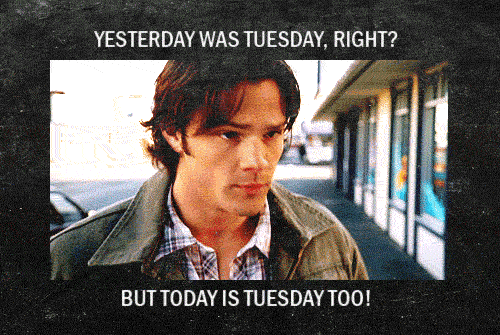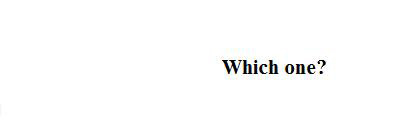Reblog If Your Name Isn't Amanda.
reblog if your name isn't Amanda.
2,121,566 people are not Amanda and counting!
We’ll find you Amanda.
More Posts from Quintessentialdisaster and Others











*hand and knees* do you have the pattern 🙏
YES 🫡🫡 i followed the video but here’s the written pattern 🫶
For anyone who wants a free pose-able human reference for drawing
The other day I came across this awesome program by accident (I don’t even remember what I was actually searching for, but on the several times I’ve looked for a program like this I’ve had no luck). It’s cool enough that I wanted to share it.

It’s called DesignDoll (website here) and it’s a program that lets you shape and pose a human figure pretty much however you want.
There’s a trial version with no expiration date that can be downloaded for free, as well as the “pro license” version priced at $79. I’ve only had the free version for two days so far, so I’m not an expert and I haven’t figured out all of the features yet, but I’ve got the basics down. The website’s tutorials are actually pretty helpful for the basics, as well.
Here’s the page for download, which has a list of the features available in both versions.
There are three features the free version doesn’t have:
Can’t save OBJ files for export
Can’t download models and poses from Doll Atelier (a sharing site for users; note that the site is in Japanese, though)
It can’t load saved files
The third one means that if you make a pose, save it, and close the program, you can’t load that pose/modified model later. You have to start with the default model. I found that out when I tried to load a file from the day before (this is why reading is important…). Whether saving your modifications (and downloading models and poses) is worth $80 is up to you.
But, the default model is pretty nice and honestly if all you’re looking for is a basic pose reference it should work fairly well as it is. Here’s what it looks like:

There’s a pose tag that lets you drag each joint into place and rotate body parts. The torso and waist can be twisted separately, and it seems like everything pretty much follows the range of movement it would have on an actual human.

Even the entire shoulder area is actually movable along with the joint! See, like how the scapular area of the back raises with the arm:

The morphing tag is one of the coolest features, in my opinion. It lets you pick and choose from a library of pre-set forms for the head, chest, arms, legs, etc. It has some more realistic body shapes in addition to more anime-like ones. Don’t like the options there? Mix a few to get what you want! Each option has a slider that lets you blend as much or as little as you want into the design.

So you, too, can create beautiful things like kawaii Muscle-chan!!

The scale tag lets you mess with the proportions and connection points of different joints. This feature combined with the morphing feature not only allows more body shape variations, but it also means that you can do things like make a more digitigrade model if you want. (The feet only have an ankle joint, but for regular human poses that’s all that you really need, so whatever.)

Or you can make a weird chubby alien-like thing with giant hands and balloon tiddies if that’s more your thing.

The ability to pose hands to the extent it allows is far more than I could have hoped for from a free program. Seriously, you can change the position of each finger joint individually, as well as how spread out the fingers are from each other. Each crease on the diagram below is a point of movement, and the circles are for spread between fingers.

And to make it a bit more convenient, there’s a library of pre-set hand poses you can pick from as well, and then change the pose from that if you like.
In both versions, you can also import OBJ files from other places for the model to hold, like if you wanted to have them hold a sword or something.
Basically, this program is awesome and free and you should totally check it out if you want a good program for creating pose references.

I do too tree
me, looking for something: where the fuck
me, spotting said thing: there the fuck

Light answers a tough question
A quick tip for writers out there, who use Microsoft Words:
Change the background colour of the pages to a mint green shade.

It is said that green is a calming colour, however, the main reason why I like this, is because I can write for a much longer period of time now, as a white background I used before made my eyes dry and exhausted after just a few hours of working.
It is basically much more soft and careful to the eyes. I can’t precisely explain why that is. I think it’s that by making a pinch softer contrast of the text and the background, your eyes does not get exposed to as much light.
Just make sure to not make the background too dark, or else your eyes will get exhausted do to over-fixating the lack of contrast between text and background.
And maybe you find a nice pastel/light background shade that fits you; give it a try.
Different things work out and fits for different people. And I just felt like sharing this.
Here’s the shade numbers I used to get my preferred colour:

Thanks for reading.
-
 moriartea-pot liked this · 1 week ago
moriartea-pot liked this · 1 week ago -
 mozzy-grande liked this · 1 week ago
mozzy-grande liked this · 1 week ago -
 puff-the-cereal-box reblogged this · 1 week ago
puff-the-cereal-box reblogged this · 1 week ago -
 sad-stucky-shipper-107 liked this · 1 week ago
sad-stucky-shipper-107 liked this · 1 week ago -
 seventy-seven-two reblogged this · 1 week ago
seventy-seven-two reblogged this · 1 week ago -
 seventy-seven-two liked this · 1 week ago
seventy-seven-two liked this · 1 week ago -
 lord-madmyth reblogged this · 1 week ago
lord-madmyth reblogged this · 1 week ago -
 lord-madmyth liked this · 1 week ago
lord-madmyth liked this · 1 week ago -
 emmaavengers reblogged this · 1 week ago
emmaavengers reblogged this · 1 week ago -
 hardpoststarfish reblogged this · 1 week ago
hardpoststarfish reblogged this · 1 week ago -
 neogale reblogged this · 1 week ago
neogale reblogged this · 1 week ago -
 bradgeigersrobotswillbeatyourass reblogged this · 1 week ago
bradgeigersrobotswillbeatyourass reblogged this · 1 week ago -
 bradgeigersrobotswillbeatyourass reblogged this · 1 week ago
bradgeigersrobotswillbeatyourass reblogged this · 1 week ago -
 axorandom liked this · 1 week ago
axorandom liked this · 1 week ago -
 jubserry reblogged this · 1 week ago
jubserry reblogged this · 1 week ago -
 hotcocoandmarshmallows reblogged this · 1 week ago
hotcocoandmarshmallows reblogged this · 1 week ago -
 theatrix-patton101 reblogged this · 1 week ago
theatrix-patton101 reblogged this · 1 week ago -
 bogboycrew reblogged this · 1 week ago
bogboycrew reblogged this · 1 week ago -
 last-braincell-standing reblogged this · 1 week ago
last-braincell-standing reblogged this · 1 week ago -
 lunabenedicta reblogged this · 1 week ago
lunabenedicta reblogged this · 1 week ago -
 anon-no5 reblogged this · 1 week ago
anon-no5 reblogged this · 1 week ago -
 intergalactictrickster reblogged this · 1 week ago
intergalactictrickster reblogged this · 1 week ago -
 queercloudkid reblogged this · 1 week ago
queercloudkid reblogged this · 1 week ago -
 it5oktolikething5 liked this · 1 week ago
it5oktolikething5 liked this · 1 week ago -
 ghoulish-kat reblogged this · 1 week ago
ghoulish-kat reblogged this · 1 week ago -
 yasamora liked this · 1 week ago
yasamora liked this · 1 week ago -
 greenteawarlock reblogged this · 1 week ago
greenteawarlock reblogged this · 1 week ago -
 greenteawarlock liked this · 1 week ago
greenteawarlock liked this · 1 week ago -
 oojamaflip-whatchamacallit reblogged this · 1 week ago
oojamaflip-whatchamacallit reblogged this · 1 week ago -
 parsley-the-crow reblogged this · 1 week ago
parsley-the-crow reblogged this · 1 week ago -
 quillienvii liked this · 1 week ago
quillienvii liked this · 1 week ago -
 quillienvii reblogged this · 1 week ago
quillienvii reblogged this · 1 week ago -
 oceancamp459 liked this · 1 week ago
oceancamp459 liked this · 1 week ago -
 mustardintheturlet reblogged this · 1 week ago
mustardintheturlet reblogged this · 1 week ago -
 mustardintheturlet liked this · 1 week ago
mustardintheturlet liked this · 1 week ago -
 cyberartz5 reblogged this · 1 week ago
cyberartz5 reblogged this · 1 week ago -
 cyberartz5 liked this · 1 week ago
cyberartz5 liked this · 1 week ago -
 thewiltingdaisy reblogged this · 1 week ago
thewiltingdaisy reblogged this · 1 week ago -
 cheesedanish12 reblogged this · 1 week ago
cheesedanish12 reblogged this · 1 week ago -
 ona-512 reblogged this · 1 week ago
ona-512 reblogged this · 1 week ago -
 michaelkai05 liked this · 1 week ago
michaelkai05 liked this · 1 week ago -
 haphazardly-e reblogged this · 1 week ago
haphazardly-e reblogged this · 1 week ago -
 haphazardly-e liked this · 1 week ago
haphazardly-e liked this · 1 week ago -
 neurodivergantizzetwitch reblogged this · 1 week ago
neurodivergantizzetwitch reblogged this · 1 week ago -
 neurodivergantizzetwitch liked this · 1 week ago
neurodivergantizzetwitch liked this · 1 week ago -
 mmorpheussss liked this · 1 week ago
mmorpheussss liked this · 1 week ago -
 mmorpheussss reblogged this · 1 week ago
mmorpheussss reblogged this · 1 week ago -
 tinyenemypaper liked this · 1 week ago
tinyenemypaper liked this · 1 week ago -
 ii-do-what-i-want reblogged this · 1 week ago
ii-do-what-i-want reblogged this · 1 week ago -
 secretlyfullofsin reblogged this · 1 week ago
secretlyfullofsin reblogged this · 1 week ago

